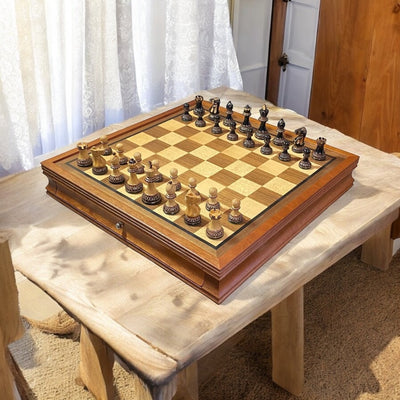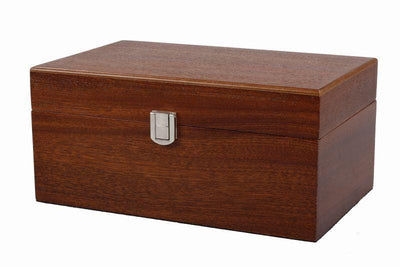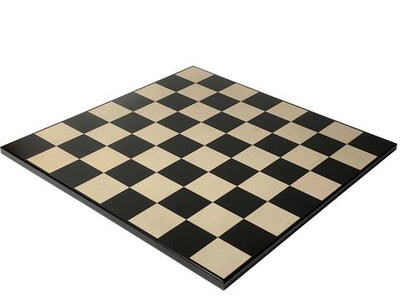Unlocking the Secrets: Understanding Chess Notation Step-By-Step
Chess is known as the game of kings, a strategic mental duel that requires not only skill but also the ability to record one's moves for analysis and review. Whether you're engaging in a casual game with friends or competing in a tournament, understanding chess notation is essential. In this comprehensive guide, we will break down the basics of chess notation, elaborate on its significance, and provide you with step-by-step instructions to get you started.
What is Chess Notation?
Chess notation is the universal language used to record and communicate chess games. By learning how to read and write notation, players can share their games with others, analyze previous matches, and improve their strategic thinking. Proper notation helps in understanding the evolution of the game and noting crucial moves that could have changed the game's outcome.
The Importance of Chess Notation
Understanding chess notation enhances your chess-playing experience significantly. Here’s why it matters:
- Analyzing Games: By noting each move, players can review their gameplay to recognize mistakes and strengths.
- Teaching and Learning: Chess notation allows coaches to provide feedback and helps students understand various strategies.
- Storing Games: Chess notation provides a method to archive games for future reference, making it easier to study classic matches or analyze your own tactics.
- Communicating with Other Players: Whether you’re playing online or in person, notation serves as a common language among players of all levels.
Basic Chess Notation: The Essentials
Before diving deeper into chess notation, let's cover the important elements you need to know.
Pieces and Their Symbols
Each piece in chess is represented by a specific letter or symbol in the notation:
- K - King
- Q - Queen
- R - Rook
- B - Bishop
- N - Knight
- P - Pawn (not specifically represented with a letter)
File and Rank System
The chessboard is made up of an 8x8 grid, consisting of files (columns) and ranks (rows). Each square on the board is given a coordinate:
- Files are labeled from **a** to **h** (left to right).
- Ranks are numbered from **1** to **8** (bottom to top).
For example, the square in the bottom left corner is **a1**, while the top right corner is **h8**.
How to Write Chess Notation
Now that you're acquainted with the basic symbols and the board layout, let's see how to write chess moves step-by-step.
Basic Move Notation
To denote a move, a player will typically follow this structure:
- [Piece Symbol][Destination Square]
For instance, if a Knight moves to square c3, you'd write it as **Nc3**.
Capturing Pieces
When capturing an opponent's piece, the notation is slightly different. You introduce an "x" to signify a capture:
- [Piece Symbol] x [Destination Square]
For example, if a Bishop captures a piece on f5, it would be noted as **Bxf5**.
Pawns: A Special Case
Pawns have unique notation rules:
- When a pawn captures, you indicate the file the pawn came from, followed by the "x" and then the destination square. For instance, a pawn moving from e4 to capture a piece on d5 would be noted as **exd5**.
- When a pawn promotes, you note the square it lands on followed by an equals sign and the new piece symbol. For example, if a pawn reaches the eighth rank and promotes to a queen on d8, it would be written as **d8=Q**.
Special Moves
Chess has various special moves that require distinctive notation:
- Castling: Castling kingside is notated as **O-O**, while castling queenside is notated as **O-O-O**.
- Check: A move that puts the opponent's king in check is denoted by adding a "+" after the move. For instance, if a queen moves to b7 to check the king, it is noted as **Qb7+**.
- Checkmate: If the king is put in checkmate, you add "#" to the move notation, such as **Qb7#**.
Practicing Chess Notation
The best way to master chess notation is to practice. Here are some tips to help you become proficient:
- Analyze Famous Games: Review games played by grandmasters or famous players. Try to write down the moves in notation.
- Use Software: There are many chess software programs available that can help you learn and practice chess notation.
- Play with Friends: Challenge your friends and write down the moves during your games. Discuss the moves afterward and learn from each other.
- Practice with Puzzles: Solve chess puzzles using notation to reinforce your understanding.
Exploring Notation Markings
In addition to the basics, chess notation can also include annotations and remarks that provide insight into the quality of moves.
- (!): Indicates a good move.
- (?): Indicates a poor move.
- (!?): Indicates a dubious move.
- (!!): Indicates a brilliant move.
Modern Trends in Chess Notation
Chess notation has evolved over time, especially with the advent of digital platforms and AI-driven analysis tools. The standard algebraic notation is now complemented by tools that allow real-time game recording, which makes it simpler than ever to keep track of your games.
Moreover, apps such as Chess.com or Lichess.org enable players to engage with notation directly, with built-in features for game analysis and instructional guidance. This integration enhances the learning experience and ensures that players can seamlessly record their progress while experimenting with strategies on a premium hardwood chess set.
Embarking on Your Chess Journey
Learning chess notation can open doors to a deeper understanding of the game and enhance your playing experience. Once you are comfortable with writing and reading moves, you'll find that your confidence in playing increases dramatically. Moreover, remembering your past games will allow you to analyze whether playing on a quality premium hardwood chess set has made a difference in your strategical thinking.
Turning the Page: The Next Move
Now that you've uncovered the fundamentals of chess notation, it's time to put this knowledge into action. Dive into games, practice recording your moves, and perhaps invest in that premium hardwood chess set you've been eyeing. As you become more proficient in chess notation, you'll find that your strategic thinking and decision-making skills will flourish, paving the way for many enjoyable games ahead. Every game is an opportunity for growth, and embracing notation will only elevate your chess journey further.









